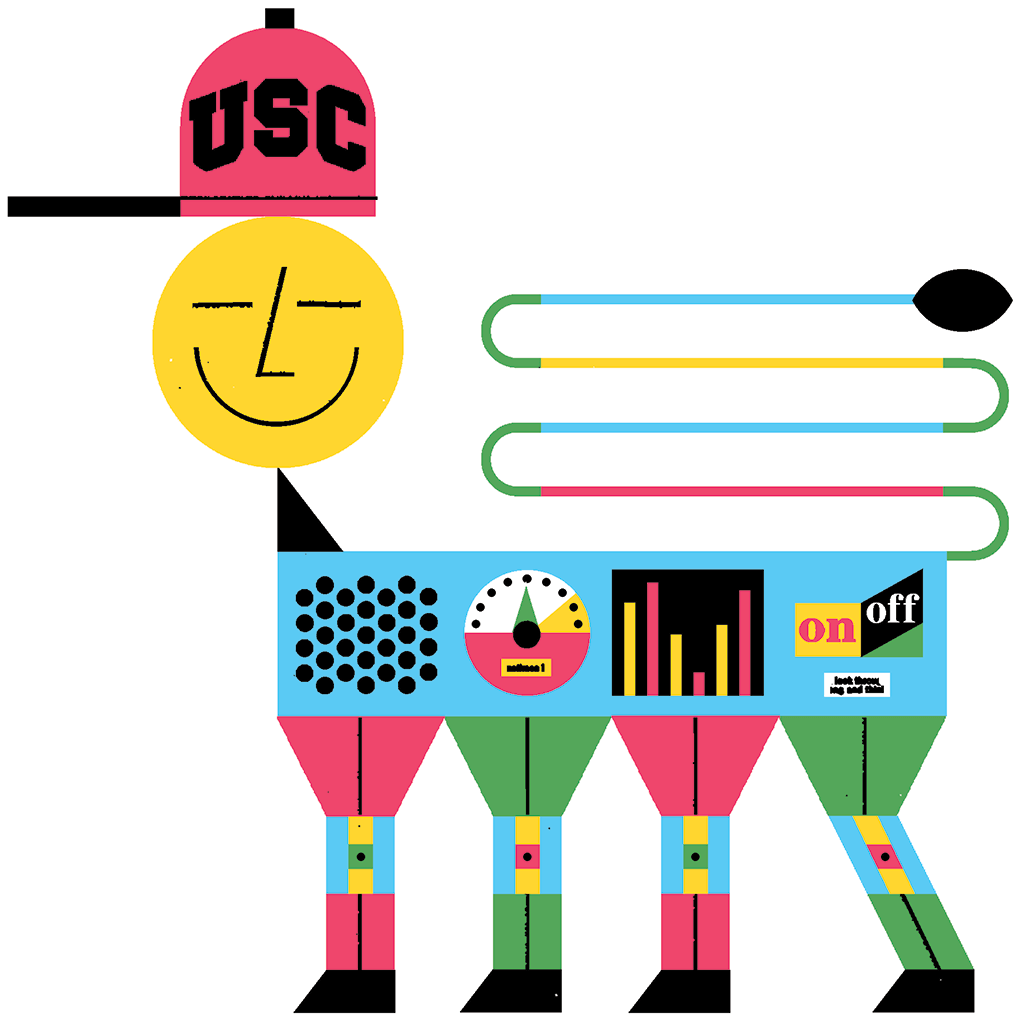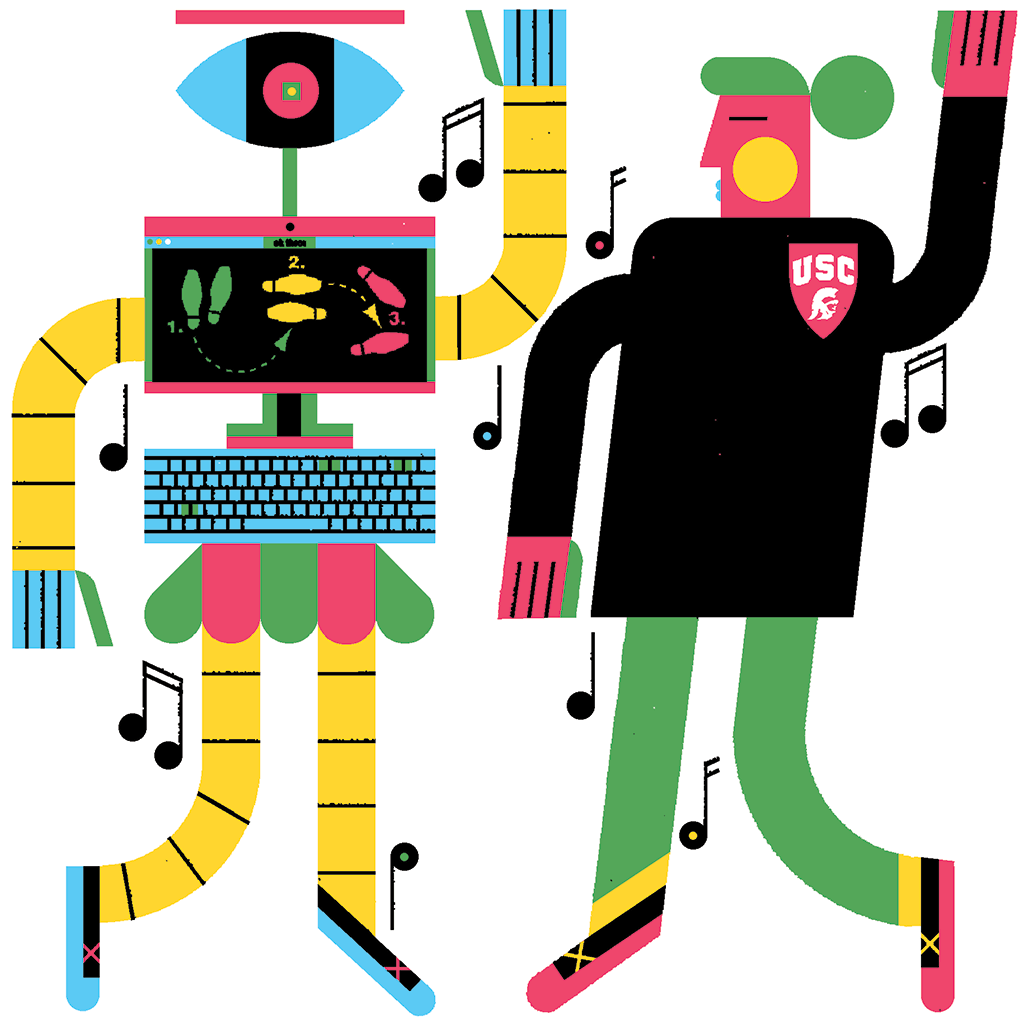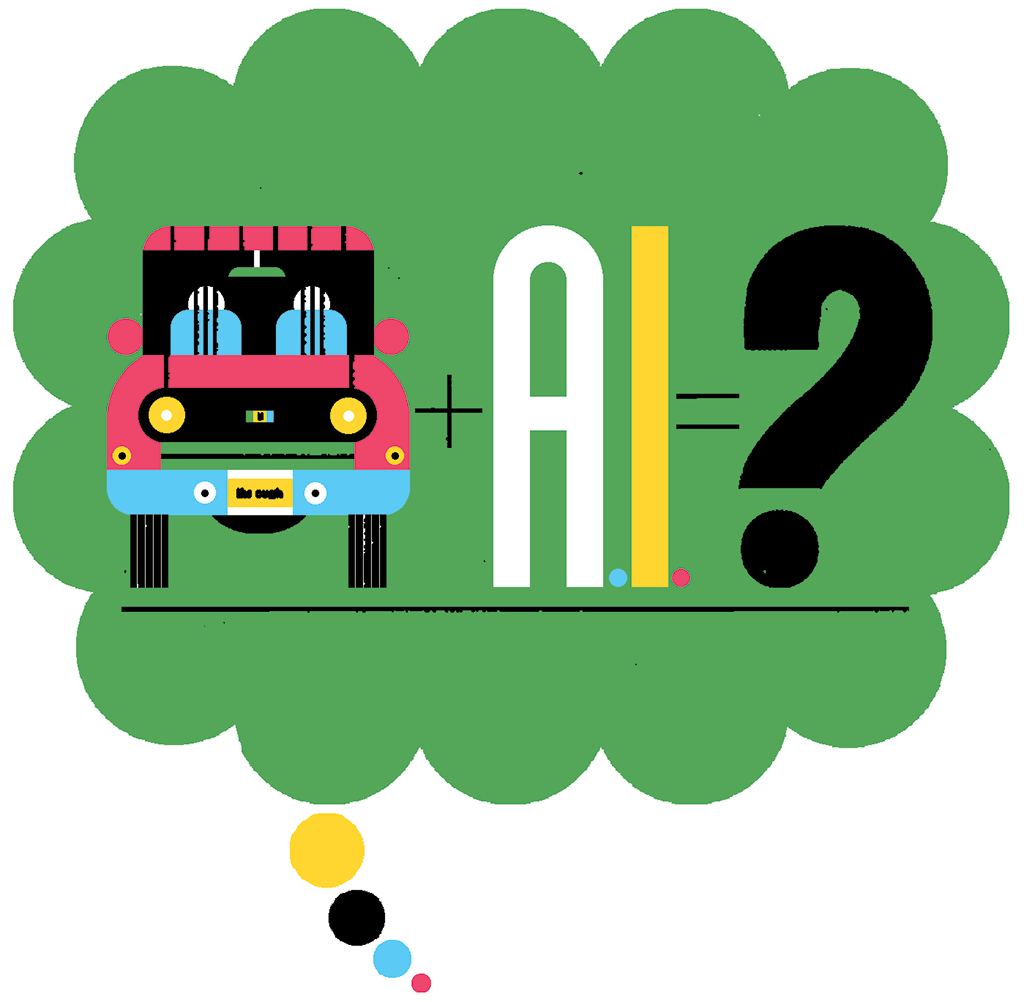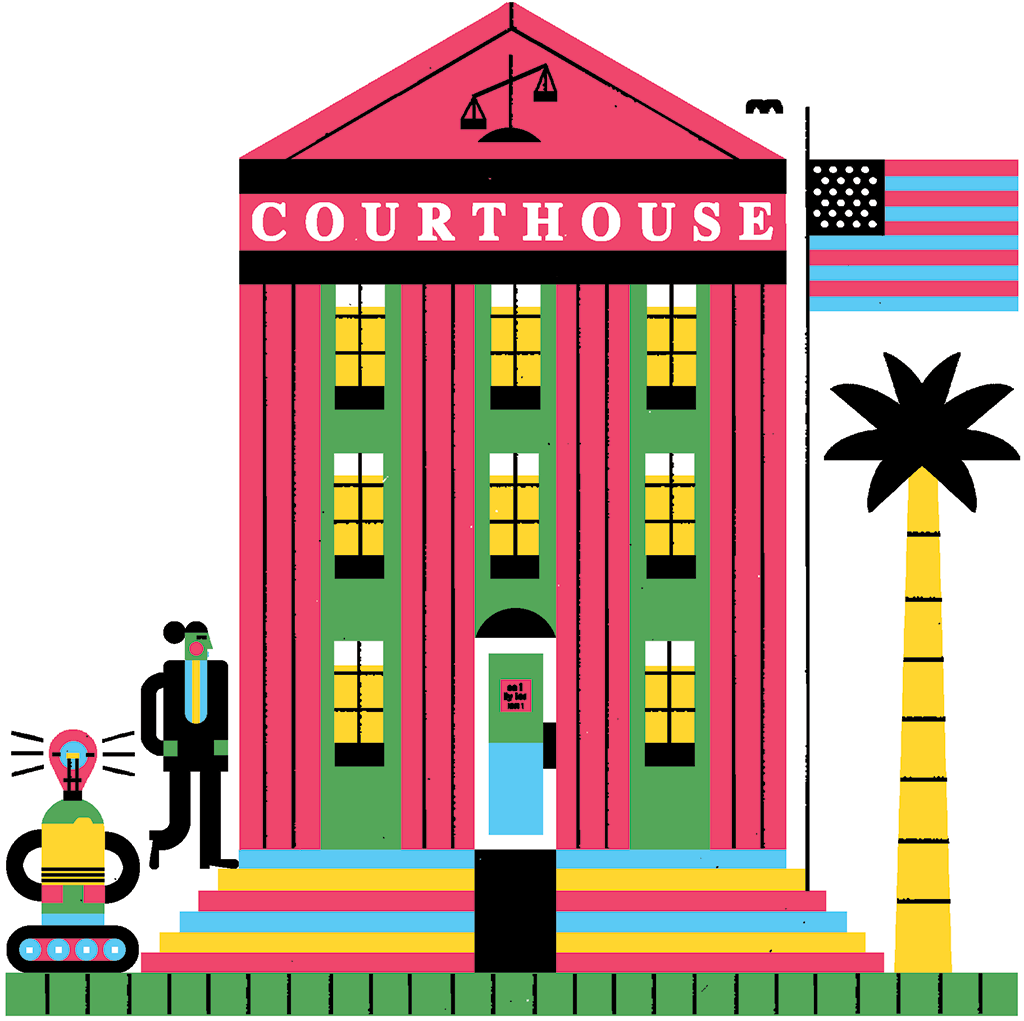How AI is Changing Trojan Learning
Dance, linguistics, drama, law — the power and potential of AI is reshaping nearly every academic discipline at USC.
By Greg Hernandez and Greg Hardesty
(Illustrations by Raymond Biesinger)
As artificial intelligence (AI) continues to advance at an accelerated pace, teachers and researchers incorporate advanced computing into nearly every academic discipline, and students across USC’s many schools are being introduced to new skills.
“Undergraduates will be able to take on problems that are far more complex than the textbook problems of yesterday — that’s a big win,” says Gaurav Sukhatme, executive vice dean of the USC Viterbi School of Engineering.
Computing will allow engineering students to rapidly connect to nonengineering fields and bring their expertise to bear on social problems, law, business, medicine and other areas, he adds.
“When I’m asked when it will be possible to use AI to address some challenging problem, I say I believe AI is poised to make a huge difference in many areas — and soon,” says Sukhatme, a professor of computer science and electrical engineering. “But it depends, in part, on how much we invest and prioritize this technology as a country and as a society.”
Here are innovative ways AI and other advanced computing technologies are transforming how USC teaches, learns and thinks.
Build-a-Pet

Can a rover actually become Big Robot on Campus?
That’s the unique challenge facing a group of USC School of Dramatic Arts students whose assignment it is to create a “campus pet” out of a delivery bot. The semester-long project for those enrolled in the “Art of Theatrical Design” course includes such elements as costume design, set design, game design, interactivity, data collection, and event management in both physical and virtual space.
“My students are very focused on story, focused on characterization,” says Associate Professor of Scenic Design Sibyl Wickersheimer. “Their goal is to create a rover that students on campus want to engage with and are excited to see. It’s really about surprise engagement, to provide a moment where you can interact and make a friend.”
The Dramatic Arts students then work with students from the USC Jimmy Iovine and Andre Young Academy on development of the rover, which aims to deliver happiness to students instead of a physical item.
Students are also creating an app to broadcast when and where the “pet” will be on campus — likely on a game day, a Halloween event, or on a play’s opening night.
The interdisciplinary class project is funded by USC Arts in Action.
“It’s nice to bring people together with these different skill sets,” Wickersheimer says. “The two groups will be able to create a history and a backstory for this campus pet that they define and create.”
Preserving Endangered Languages

During a 2018 research trip to Italy, Khalil Iskarous, associate professor of linguistics at the USC Dornsife College of Letters, Arts and Sciences, recorded people speaking Ladin, a language used by only a few hundred people in the country’s Fassa Valley.
His research turned into an effort to build a computer program that could analyze audio data by creating outlines of how Ladin’s words and sentences are formed and what they sound like when spoken aloud.
The goal is to use speech recognition software on languages that don’t have thousands of hours of collected data like English, Mandarin and other widely used languages do.
“[We want] to apply the computer program to as many languages [as possible], as we keep working on [Ladin] as an example,” Iskarous says.
Iskarous and undergrad students at USC Dornsife were asked to return next year, to help the children in the community learn Ladin. Work continues on creating an app for very small children incorporating AI-enabling speech recognition.
“Students love it because it gets them to do something very practical and to do something about the preservation of world culture,” Iskarous says.
Teaching AI Ethics

Data scientist and USC Marshall School of Business professor Vishal Gupta knew students could learn about coding and algorithms in other classes. So he set out to educate them about some of the broader practical and ethical issues around AI and how these tools interact with society through his course “AI: Seeds of Change or Existential Threat?”
With the help of a series of guest speakers from private industry, startups, nonprofits and more, Gupta says the class explores whether AI or machine learning should be used for certain tasks, such as choosing job candidates, for example. And, if the answer is yes, students will then explore the question: “How will this change our business or disrupt our industry?”
“Our students are going to one day be in these meetings where people will be talking about deploying these sorts of tools in their businesses,” Gupta says. “You need a good grasp of understanding the ethical ramifications, the potential legal issues, how it affects branding, and how it fits into the larger strategy as a firm.”
The most important question is how responsible business leaders can use AI in a way that doesn’t unintentionally harm others.
“The goal is to get people to think about this, then start proposing good solutions to these challenges so we don’t just start rushing head-first into an AI solution that might backfire and might have terrible ramifications,” Gupta says.
Improving Patient Care

Researchers at the Keck School of Medicine of USC are using an $18 million initiative funded by the National Institutes of Health to accelerate Alzheimer’s disease research and enhance patient care.
USC neuroscientist Paul Thompson, associate director of the Mark and Mary Stevens Neuroimaging and Informatics Institute, is involved in the effort at 11 sites across the United States.
The researchers are employing AI and machine learning to bolster precision diagnostics, prognosis and the development of new treatments for Alzheimer’s disease. Algorithms can analyze data at a previously impossible scale, Thompson explains.
For example, AI can rapidly compare thousands of brain scans, helping doctors detect the probability of a person developing Alzheimer’s or Parkinson’s disease or another cognitive ailment.
“Radiologists do this well by hand today,” Thompson says, “but AI tools can greatly enhance the accuracy of their decisions.”
Similarly, AI can flag patterns that can alert radiologists to errors or, conversely, point them in the direction of new discoveries.
Getting The Job With AI

For some people, a job interview is so anxiety-inducing that it can completely sabotage their chances of landing the job.
The Virtual Interactive Training Agent (VITA) uses AI and virtual humans to allow specific groups of people to repetitively practice interviewing in a safe, simulated environment.
Originally developed to help people with autism spectrum disorder improve their employment opportunities, VITA has been adapted to help veterans, juveniles on probation and low-income individuals.
“Interacting with virtual agents has this advantage where it’s not a real person but it does engage you like a real person,” says Albert “Skip” Rizzo, director of medical virtual reality for ICT. “You suspend disbelief when you interact with it, but you also don’t have that same fear of evaluation.”
Developed by USC’s Institute for Creative Technologies (ICT) in partnership with the Dan Marino Foundation, VITA is based on 15 years of research on anxiety and experiential learning.
VITA captures a variety of possible interview scenarios with virtual interviewers representing various genders, ages and ethnic backgrounds. The interviewers can be friendly, neutral or hostile.
Currently, users are recorded as they go through virtual interviews; their interaction is then evaluated by a vocational expert. But software that tracks facial expression to determine eye contact, response time and vocal pitch may be integrated into the VITA soon.
“It’s a living project and it’s going to evolve,” Rizzo says.
Helping Robots Move with Grace

Professor of Dance Margo Apostolos has long been involved in the design, construction, operation and use of robots.
Recently, she connected some of her dance minors in the USC Glorya Kaufman School of Dance with students of USC Viterbi Assistant Professor of Aerospace and Mechanical Engineering Quan Nguyen to develop graceful, choreographed robotic movement.
“It’s getting the graceful, elegant movement into a robot built to move linear and angular,” says Apostolos, an expert in robot dance choreography.
Apostolos spends fewer than two lectures on dance and technology in her “Introduction to Dance as an Art Form” class. But that brief study of robotics has been fascinating enough for a number of her students to get involved in the extracurricular activity with USC Viterbi that one of the students memorably dubbed “choreobotics.”
“Our group is growing,” Apostolos adds. “You don’t have to advertise it. There is a genuine excitement to work in the lab with the USC Viterbi students. It’s a wonderful collaboration.”
Teaching the Teachers

Associate Professor of Education Yasemin Copur-Genctruk has helped create an intelligent virtual tutor for teacher professional development at the USC Rossier School of Education.
Now Copur-Genctruk is part of an effort to create a virtual AI hub to expand the content areas and to make the material easily accessible to teachers at the high school, middle school and elementary school level, anywhere.
“That’s the beauty of our program: We are not restricted to any one location,” she says. “It’s going to be publicly available and any teacher who is interested in improving their knowledge and skills will be able to complete it.”
Copur-Genctruk points out that few advanced learning technologies have been developed to support teacher instruction or professional development. This effort applies pedagogical virtual agents and dialogue-based tutoring to enhance teachers’ knowledge of both content and teaching methods.
“I think COVID-19 made it clear that this is the future,” she says. “We really need to have these types of opportunities available to teachers anytime. Enabling AI in professional development programs will lead to more improvement in the knowledge we need to improve teaching skills.”
Real-World Applications for AI

To help students match existing data sets with real-world situations, the USC Viterbi Information Technology Program is launching a minor this fall in applied artificial intelligence.
“For example, what happens when a self-driving car has to make a decision, but any decision it makes will result in a collision?” asks ITP director Jeffrey Miller. “It’s an ethical decision: Do you minimize the impact to protect, say, the pedestrian? Or do you make it a priority to protect the occupants of the vehicle? You must program the AI to decide.”
Miller, professor of computer science and information technology practice, predicts that this new minor will quickly become one of the most popular on campus and sees AI becoming ever more important outside of engineering.
“Everyone is at least going to have some basic understanding of it,” he says.
Reshaping Tech Law

The Legal Innovations Lab at the USC Gould School of Law exposes students to areas of legal practice that help them develop skills to address emerging technology issues, including the implications of AI, big data and analytics on the practice of law.
Legal technology entrepreneur Dorna Moini ’12 (LAW) is the CEO of Documate, a no-code software platform for turning templates and forms into intelligent workflows. She teaches the lab with a focus not just on technology, but also on thinking about the law in innovative ways to better deliver legal services to all kinds of clients—pro bono or paid, consumers or corporations.
“These skills will help students think differently, whether they are doing strictly legal work or recrafting a modern law practice,” Moini said of her class when she began teaching in 2020. “USC Gould has put a focus on law, technology, and innovation, and is definitely at the forefront in preparing students for the future of the practice.”